Be it the pagoda-style structures displaying architectural genius or intricate carvings on the walls and roofs, elaborate rituals or a fascinating jumble of Hindu and Buddhist beliefs, the temples in Nepal with a sizeable Hindu population, coexisting with a Buddhist community and people with other religious beliefs will blow your mind. You can’t afford to miss these sacred places with historical importance!
Here’s a list of 10 sacred temples in the Kathmandu District that you can visit on your Nepal trip:
1. Pashupatinath Temple

Situated on the bank of river Bagmati, Pashupatinath Temple is dedicated to an incarnation of Shiva, Pashupatinath – the protector of animals. The glorious temple is a UNESCO world heritage site and an architectural genius which has withstood the test of time, and stood undiminished even by a 7.8 magnitude earthquake! Its earliest evidence dates back to 4th century, though the current main temple was built in the 17th century.
This pagoda-style temple is cubic, with its four main doors covered with silver sheets and two-storeyed roof made of pure copper and gold. You will spot a colossal brass statue of Nandi Bull from the western gate and a unique, four-headed lingam inside the shrine. Only Hindus are allowed to enter the compound of the main temple, while all the other parts are open to all. According to the popular legend, the origins of Pashupatinath Temple lie in a mound where a cow offered her milk daily. Out of curiosity, a farmer dug at the spot and discovered a linga with Shiva’s faces carved on it, emitting a very bright light. Later, a shrine was built, dedicated to this incarnation of Shiva.
Timing: Open all days – 4:00 AM to 12:00 PM and 5:00 PM to 9:00 PM
2. Swayambhunath Temple
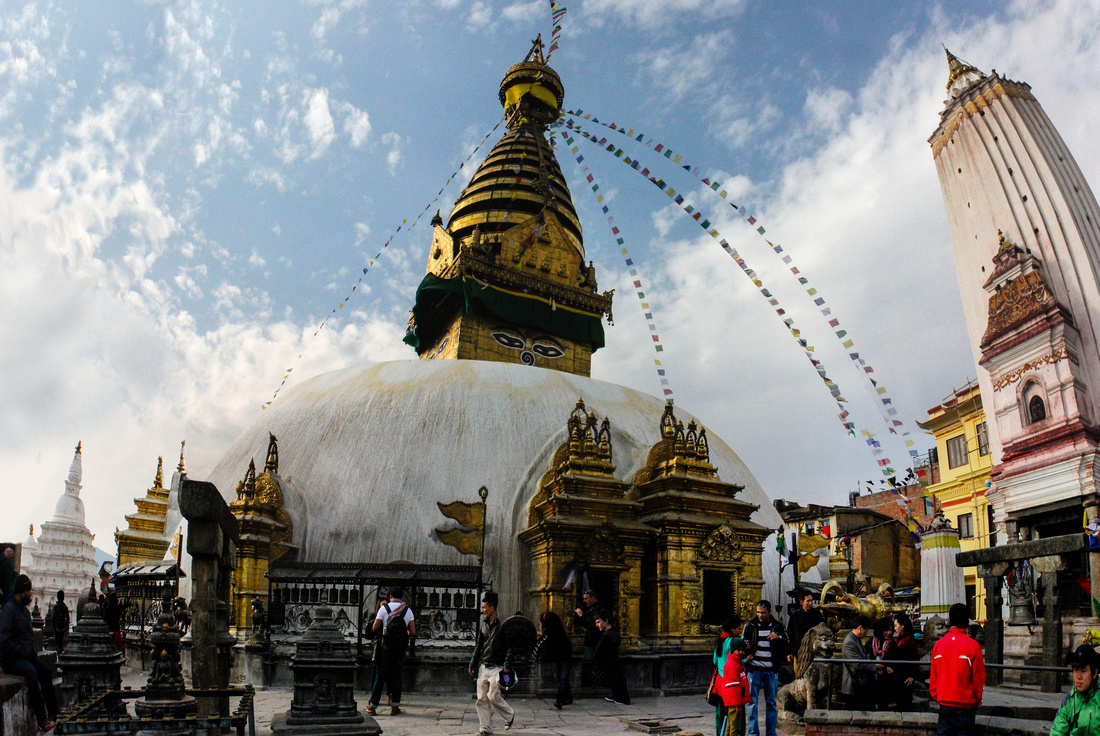
Some 320 steps from the main entrance will take you to a lofty hilltop, on which the Swayambhunath Temple is built, giving a spectacular view of the Kathmandu Valley lying below. Also known as the ‘Monkey Temple’ because of the mob of monkeys that reside here, Swayambhunath Temple is a sacred structure for both Buddhists and Hindus.
The large dome of the temple symbolizes the entire world, and the eyes painted on a cubicle above the dome represent wisdom and compassion, which helps one reach the state of enlightenment. Swayambhu Temple dates back to the 5th century CE. Legend has it that the Kathmandu Valley was once filled with a lake and the temple was born out of a lotus that bloomed in the middle, the name meaning ‘Self-created’.
Timings: Open all days – 12:00 AM to 12:00 AM. Entry fee is NPR 200
3. Budhanilkantha Temple
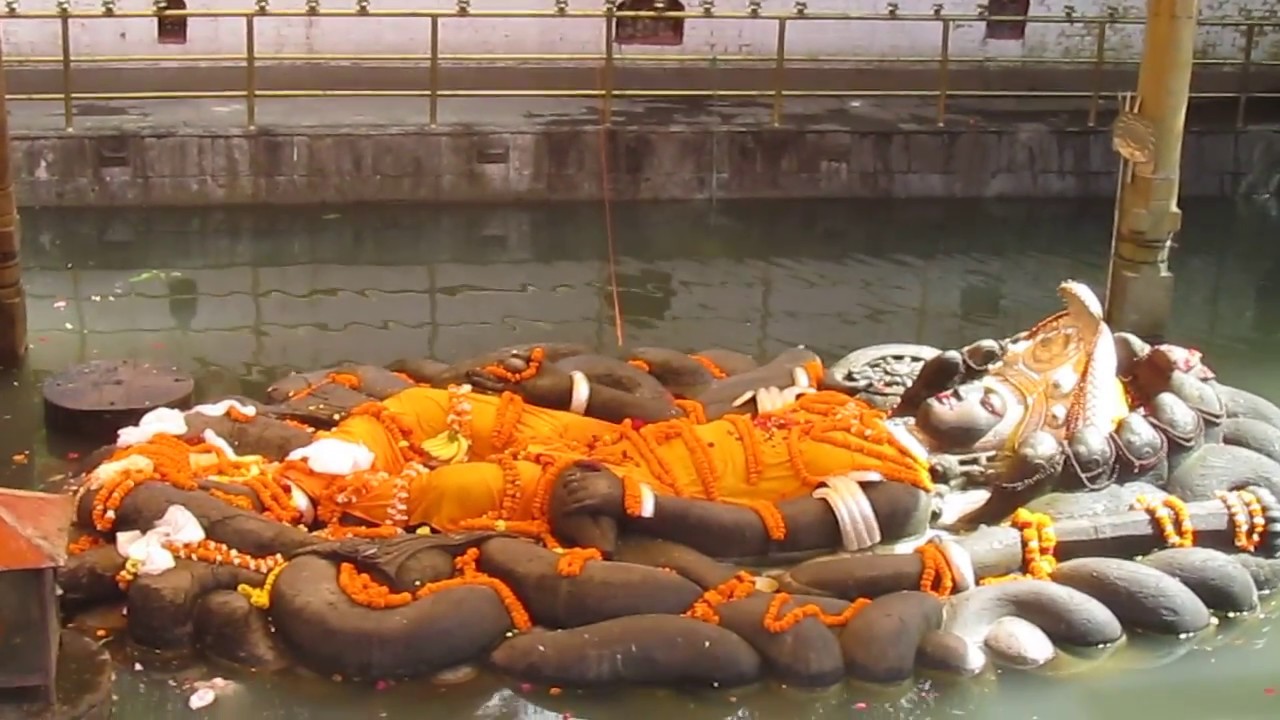
Famous for its enigmatic stone carved statue of Lord Vishnu in a resting position, the open-air Budhanilkantha Temple is an architectural marvel of Nepal. The statue, which is over 1000 years old, is carved out of a single block of black stone and lies in a recessed pool of water.
According to the local legend, a farmer and his wife once stuck the statue while cultivating the land and blood started to flow. This led to the discovery of the water figure of Budhanilkantha deity which floats in water. Another legend states that the statue was brought to Kathmandu during the reign of Vishnu Gupta in the seventeenth century. Thousands of pilgrims visit Kathmandu to attend the Haribondhini Ekadashi Mela, which takes place on the 11th day of Hindu month of Kartik (October / November) and celebrate the awakening of Lord Vishnu from a very long sleep.
Timings: Open all days – 3:00 AM to 7:00 PM. For Darshana, visit between 4:00 AM to 5:00 PM.
4. Dakshinkali Temple

Dedicated to Hindu Goddess Kali, the Dakshinkali Temple is a sacred place for Hindus where animals like cockerels and uncastrated goats are sacrificed for the fulfillment of wishes and well-being of the family. These rituals are usually carried out on Tuesday and Saturday, though the best time to observe these rituals is the Dashain Festival, which generally falls in October. During the festivities, Dakshinkali temple is beautifully decorated, a large number of stalls selling different kinds of things are set up, and thousands of worshippers attend the festival and take part in the extravagant rituals. Cameras are allowed inside the temple.
Timings: Open all days – 6:00 AM to 9:00 PM
5. Guhyeshwari Temple
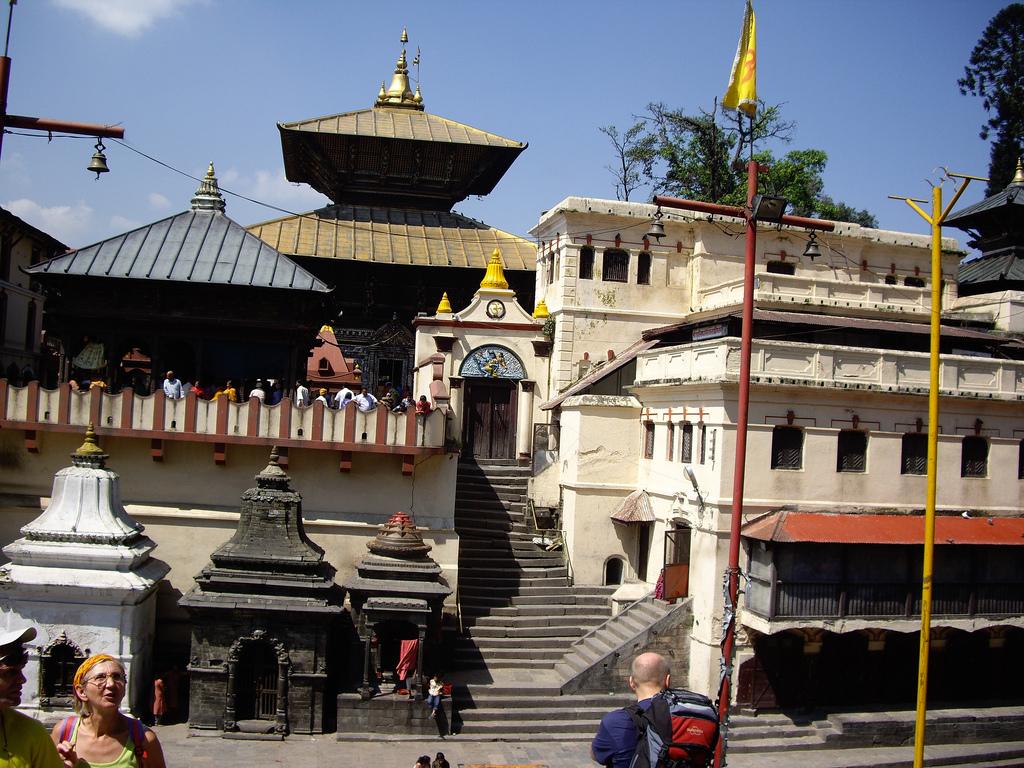
Located on the embarkments of Bagmati River near Pashupatinath Mandir, Guhyeshwari Temple is one of the many Shakti Peeths which holds immense significance among many Hindus and Tantric practitioners. King Mala built this temple in the 17th century. It is believed that after the self-immolation of Sati, Shiva wandered, carrying the corpse on his shoulder. Wherever the parts of that body fell, Shakti Peeths originated. Arguably, this temple is where Sati’s knowledge (Guhya) fell and hence originated the Guhyeshwari Shakti Peeth.
Only Hindus are allowed to enter the shrine where the goddess is worshipped in a water container called Kalash, which is covered with a layer of silver and gold. Built-in the Bhutanese pagoda-style architecture, the exterior of the temple is quite simple, but the walls and pillars are adorned with flower motifs and beautiful patterns.
Timing: Open all days – 7:30 AM to 7:30 PM
6. Jagannath (Krishna) Temple

Jagannath Temple is the oldest structure in the Durbar Square area, claimed to have been constructed by Pratap Malla, but historical evidence suggests that it was built by Mahendra Malla, back in 1563. The two-storeyed temple is built on a three-tiered platform and is famous for the erotic carvings on its roof. Apart from its historical and religious importance, get ready to be surprised by the intricate carvings on the walls.
Timings: Open all days – 24 hours
7. Kirateshwar Mahadev Temple

Situated on the west branch of Bagmati River, between Pashupatinath and Gujeshwori Temples, Kirateshwar Mahadev is one of the many dedicated to Lord Shiva. This temple is a legacy of the Kirant Dynasty of Nepal Valley. According to the gurus present here, Kirantis prayed and buried the dead at Kirateshwar. Although the architecture is simple, what’s interesting is the Nepali music concert that is held every full moon night. Enjoy your evening with some soothing music produced by classical instruments like tabla, flute, and sitar. Entry is free.
Timings: Attend the musical concert on full moon nights, from 5:30 PM to 7:30 PM
8. Kasthamandapa

This architectural marvel of Nepal, locally known as Maru Sattal, built-in pagoda-style architecture and believed to be made out of a single tree, collapsed during the 2015 earthquake. The initial attempts at its reconstruction were put off due to protests from public and conservationists demanding originality. The rebuilding has now kicked off and will certainly be completed by 2021.
It is believed that Kathmandu got its name from Kasthamandapa, which may have been built in the 7th century, the oldest temple built in the Lichhavi period – proving its historical significance.
Timings: Open all days – 24 hours
9. Taleju Temple
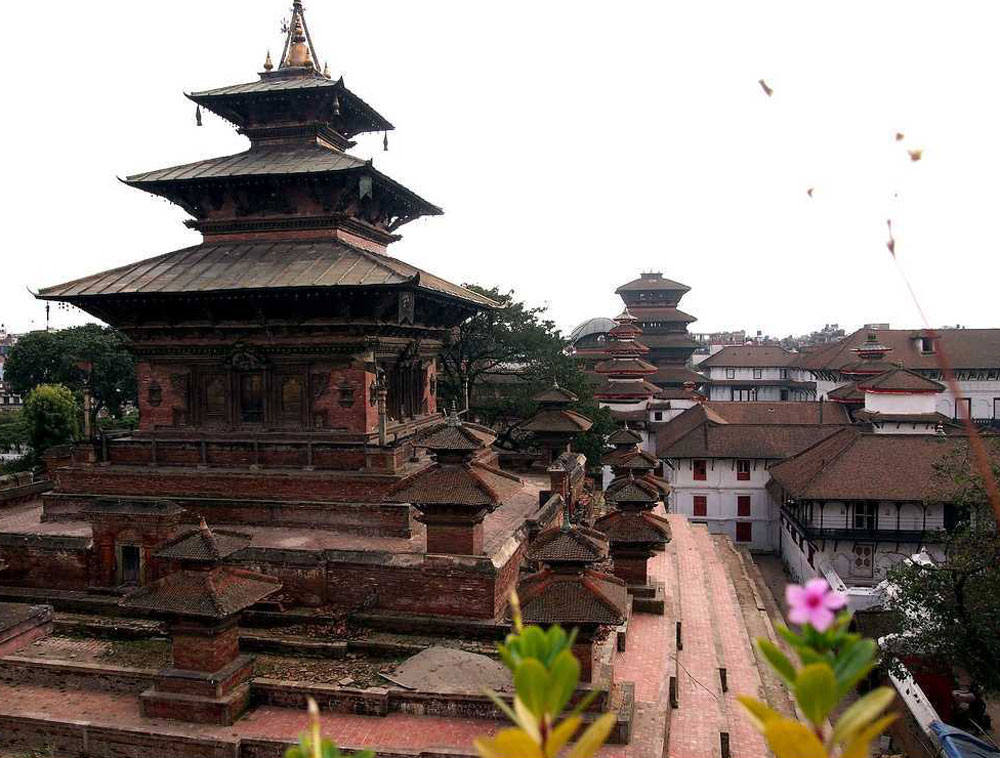
The magnificent Taleju temple, located in Durbar Square of Kathmandu, is dedicated to the clan Goddess of Malla kings, Devi Taleju Bhawani. Traditionally, entry into the temple was restricted to kings but has now been extended to the Hindus. It is believed that the temple was constructed in the shape of a Yantra, as was directed by the Devi herself. In the middle of Durbar Square, the temple, set atop a pedestal, is a stunning sight that reminds people of its rich heritage and cannot be missed even when the square is bustling with activities. The Degu Taleju Temple is not open to all. However, on the special occasion of Dasain, devotees can enter to offer prayers to the Goddess. The rest of the time, tourists can explore the shrine from the outside.
Timings: Open all days – 24 hours
10. Boudhanath Stupa
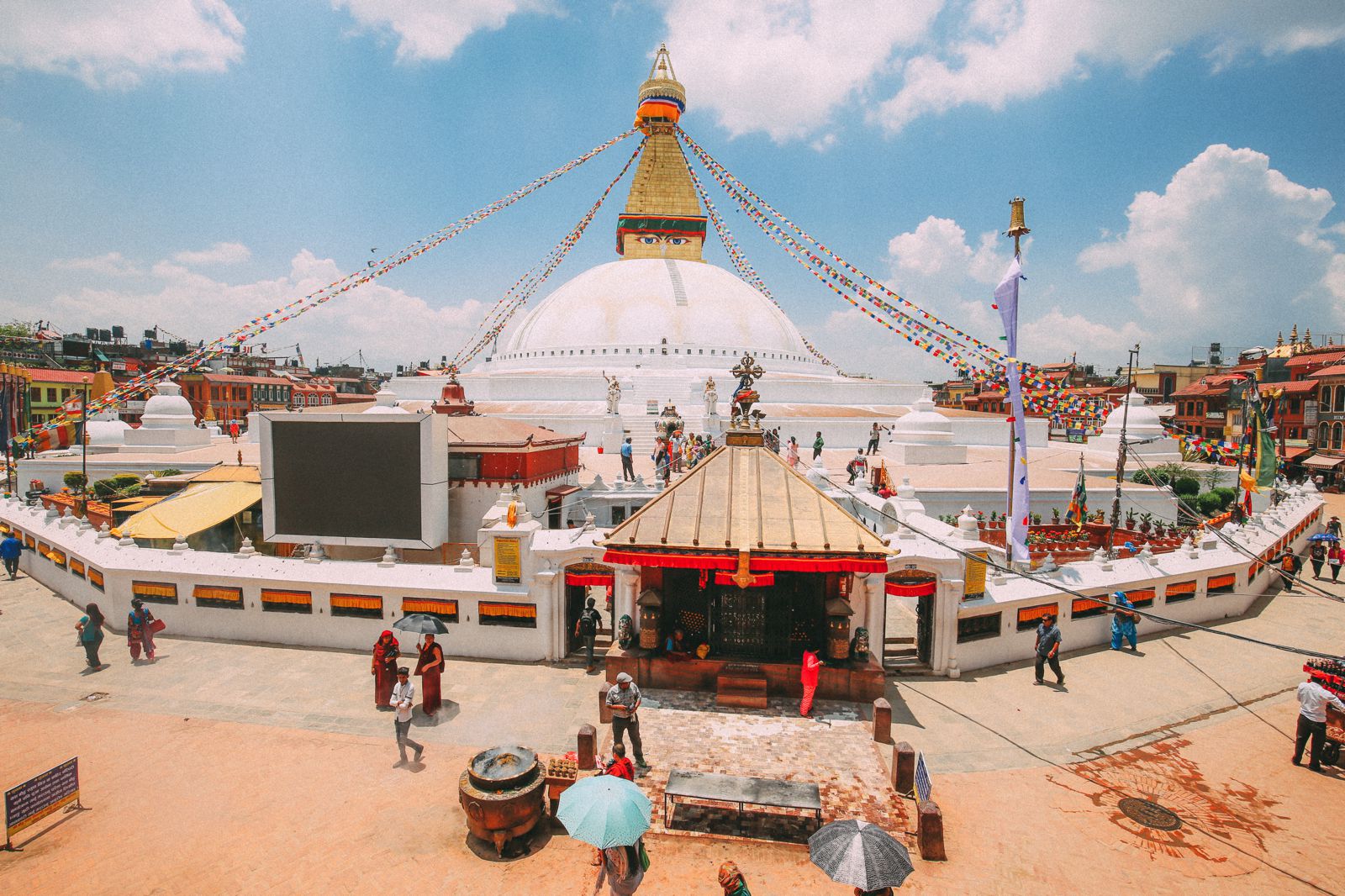
Watching over Kathmandu like a guardian angel, the Boudhanath Stupa dominates the skyline with its gargantuan spherical shape. The massive mandala of this magisterial stupa makes it the largest in Nepal and the continent. Situated at a distance of about 11 kilometers from the central region and the northeastern outskirts of the capital city of Kathmandu, the stupa receives many devotees of different religions who bow their heads in humble prayers or come to seek refuge around it. Very few places match the beauty of the Boudhanath Stupa. Thousands of pilgrims gather here daily and immerse themselves in performing a ritualistic circumnavigation, known as the ‘kora’, of the colossal dome. It is believed that anyone who prostrates in front of the stupa and circumambulates it with no ill thoughts in their hearts receives good karma. Moreover, the gates of Hell are permanently closed to them, and they are also saved from being reincarnated in the lower realms.
Timings: Open all days – 24 hours
You can visit these temples to find peace or witness the powerful faith of people, or just touch the intangible past. Temples are, after all, centers of faith and faith is quite powerful!


